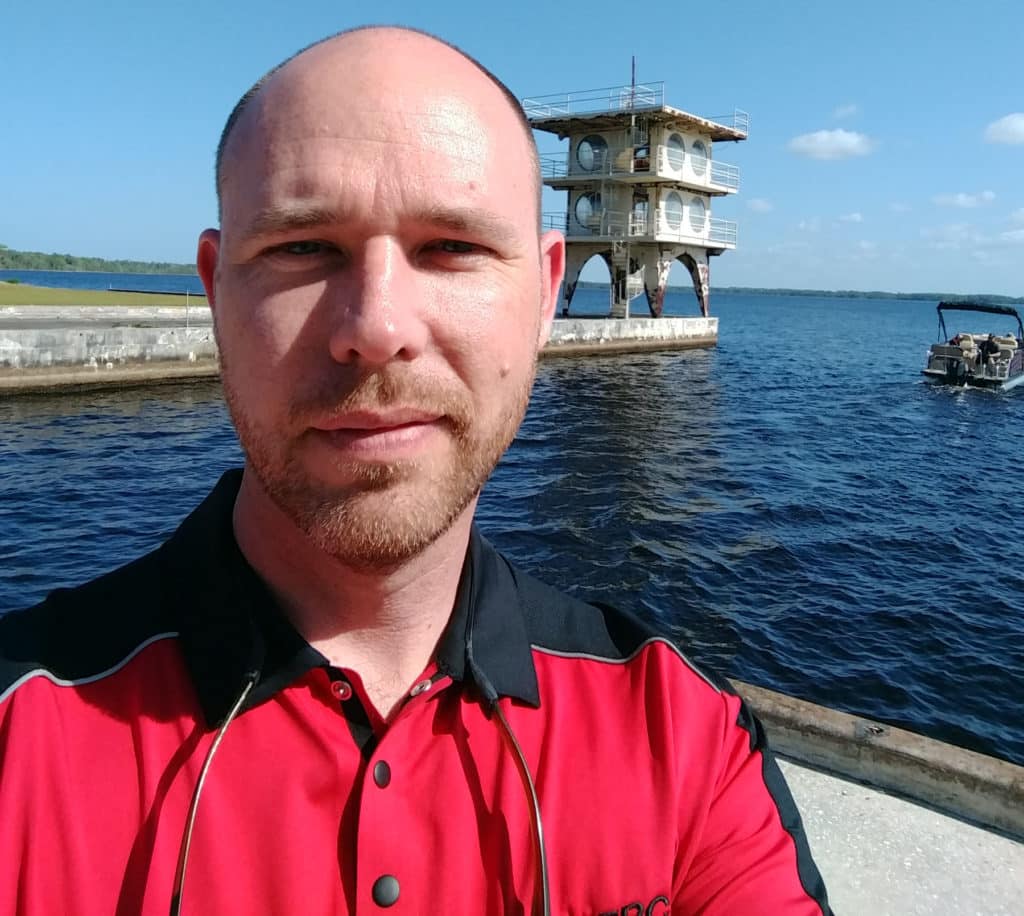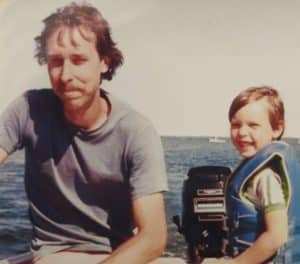
Mercury Racing Director of Engineering Jeff Broman is a home-grown talent. Born and raised in Fond du Lac, Wis., by parents who happened to be Mercury Marine employees, schooled at St. Mary Springs Academy and the University of Wisconsin, Broman was almost destined to return to Mercury with his engineering degree in hand. Now 41 years old and already 20-year veteran at Mercury, Broman is leading a team of engineers at Mercury Racing, from an office just down the road from his high school.
“I’ve been involved in a number of challenging projects at Mercury,” said Broman, who accepted his position at Mercury Racing in early 2018. “Here at Racing we face the challenge of deciding what to do next. We have many ideas on the board but need to devote our resources to the best ideas, those that will have the biggest impact with our customers.”
Broman has been a witness to a tremendous shift in technology at Mercury. As a summer student intern he was assigned to a team tearing down two-stroke Mercury OptiMax test engines and after joining the company full-time helped develop the second-generation of OptiMax direct-injection technology for V6 and later L3 motors. He next worked on teams developing the six-cylinder four-stroke supercharged Verado outboards, and later the four-cylinder Verado models. In 2007 he was assigned to a team working on a advanced engineering project that would apply exhaust catalyst technology to four-stroke outboards to reduce emissions.
“That catalyst project was a joint effort with the California Air Resources Board (CARB) and it was a very valuable exercise,” said Broman. “We were able to work collaboratively with regulators, rather than in an adversarial relationship.”

Broman advanced to the role of technical manager for the all-new 2.0-liter outboard family, and next spent four years as a technical manager on the team creating the all-new 4.6-liter V8 and 3.4-liter V6 outboard platforms. In that role, Broman collaborated with the engineering team at Mercury Racing.
“This was part of an effort pushed by David Foulkes, who was then Mercury Chief Technology Officer, that the Mercury Racing product should be developed alongside our mainline outboards,” said Broman. “So Racing was consulted as we were creating the first templates for the 4.6-liter platform, and the supercharged version that became the Mercury Racing 450R was designed right alongside the Mercury Verado 300.”
The move to Mercury Racing has put Broman in a much more intimate working environment.
“The scale at Racing is much tighter,” said Broman. “We’ve got 30 people on the engineering team at Racing, compared to more than 400 down at the main facility, which means we always are working in a very collaborative manner, and that everyone at Racing wears a number of different hats. We all have to have a wide range of expertise, and so this is a staff with a lot of tenure and experience.”
Broman arrives as Mercury Racing aims to meet the elevated expectations of today’s high-performance boating customers.
“Twenty years ago it was ok to sell a 2.5-liter two-stroke outboard that was noisy and smoky and maybe not very reliable, as long as it was fast,” said Broman. “All the customer expected was fast. Today our Racing customers still want fast, but it has to come with the same warranty and reliability Mercury offers its mainline customers. Today’s customers expect a high level of sophistication along with performance, just as they experience with their automobiles. Mercury Racing is to Mercury Marine as AMG is to Mercedes, taking a premium base product to a higher level of performance demanded by a very select customer.”









